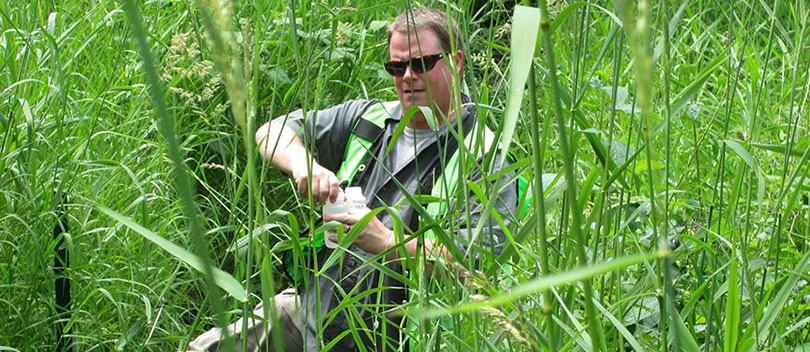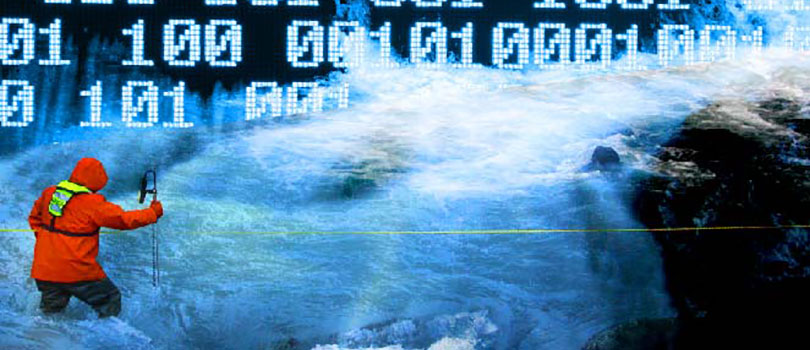
A New Way of Thinking … from Water Quality Data to Information
The water quality monitoring community needs to think differently about how we collect, store, and analyze all types of water quality data. Twenty years of field work in water quality and water resources have led me to the conclusion that to truly improve and protect the world’s waters, we need to think differently about how we plan, collect, analyze, and report water quality information.
For the majority of my career I have managed mountains of water quality and environmental data.
I’ve worked with more spreadsheets and custom solutions than I care to remember. I’ve wondered how my peers in other cities, states/provinces, agencies, and countries collected, analyzed, processed, and stored their data. I’ve seen and experienced the countless hours and budgets allocated in developing custom agency tools, only to have those tools become inoperable once the author was no longer available for support. I have seen many levels of sophistication (or lack thereof) in water quality monitoring programs, as well as the perception of the value of that water quality monitoring data by managers and policy makers. All of this exposure has led me realize that many water quality monitoring programs are information poor, despite the amount of data a program or project may collect. When I joined the City of Lake Oswego in 2005, I had decided it was time to work at the local level and to connect “water quality monitoring and good science” with “policy.” The decision to work at the local level exposed me to a wide range of programmatic issues like enforcement, permit compliance, education, program and project management, and probably most importantly, how water quality monitoring could …and should…support telling the true story of “restoring and maintaining the chemical, physical, and biological integrity of the Nation’s waters.” As the Water Quality Program Coordinator for the City, it was my job to comply with permit conditions, implement management plans, and show progress toward the reduction of water pollution. In 2007, when the City was afforded the opportunity to implement two gaging stations with water quality sondes, I knew that traditional data processing methods were not going to support my program and a custom solution was simply not practical. AQUARIUS was deployed to turn the large volumes of real-time data into useable information, alerts, and reports with the resources we had at hand, and by the one person resource - me. In 2011, I integrated the City’s Weather Station Network into AQUARIUS and truly began integrating the water resource time series in the City of Lake Oswego. The City’s use of AQUARIUS was out of necessity. (Click here for the AQUARIUS case study that will give you more information on my use of AQUARIUS for Stormwater, TMDL Monitoring, and Regulatory Compliance).
Stormwater, TMDL Monitoring & Regulatory Compliance
City of Lake Oswego Improves Urban Water Resource Management with Real-Time Data Analysis
“Despite governing a small municipality, our policy makers want to know that they can trust our environmental data. By using AQUARIUS, we use the same methodologies and tools to build our rating curves and process our environmental data as the USGS and Water Survey Canada. That provides credibility.” David A. Gilbey
“You can have data without information, but you cannot have information without data”So why did I jump ship from a so called “cushy” public service job to work with this software company? I’m passionate about water. Period. I know there is a global need to change the way we plan, collect, analyze, and report water quality information… to ensure that we provide our stakeholders with usable, timely, and accurate information. Joining the Aquatic Informatics team has given me the opportunity to do just that, by contributing to protecting and enhancing the world’s water resources through inspiring monitoring solutions for water availability and water quality. This takes inspiration, innovation, and forethought – something that Aquatic Informatics has an abundance of. The customers of Aquatic Informatics are just as amazing and inspirational…and now I have the opportunity to help build solutions for these professionals utilizing their input on best practices.
- Daniel Keys Moran.
I’m now working with a team that is passionate and dedicated to providing the best possible tools so “field guys (and women)” and water professionals can do their jobs more efficiently and effectively, enabling them to produce data of a known quality, connect the data with the policy, and ultimately produce timely, accurate water information so that the world’s waters are available in the right quantities and qualities to support future generations. I have experienced first-hand how AQUARIUS helps organizations transform from being data rich and information poor, to data rich and information rich. This sounds easy, but in water quality monitoring, how many tools can you name that truly accomplish this? Stay tuned for more blog posts on the following topics: watershed management, stormwater management, TMDLs, regulatory compliance, and other related topics. I look forward to your comments as well. Please use this blog to share your ideas and success stories so that we can continue to evolve industry best practices together. See you on the water.



